Phone With The Best Camera 2018
Gone are the days where you'd decide to take a photo and immediately reach for a digital camera. Over the years, smartphones have advanced to a point where they've taken over as many people's primary camera and now it isn't unusual to see three or even four lenses crammed into a smartphone.
But, with so many great camera phones available right now, it can be difficult to decide which one is right for you. Luckily, we've put together this guide to make that decision a little easier.
We've reviewed countless phones over the last year and you'll find our top camera phones available on this page, covering a range of budgets and features. Some devices let you get closer to your subject with zoom lenses, some are well-equipped for shooting in low light and others offer best-in-class video recording. No matter what you're looking for from your phone camera, you can expect to find something in this list.
You'll find a brief summary of each phone below, but you can head over to our full reviews to learn more about each pick, included our first-hand experiences with each camera.
We test each camera in a range of real-world scenarios, including portrait, landscape, light and dark conditions and include sample images in each review to give you a good idea of how each phone performs in a range of settings.
You can also head over to our best phones list for our definitive guide to the top phones released this year, along with our guides to the best Android phones and the best iPhones for the best of either OS.
How we test
Learn more about how we test mobile phones
Every phone we review goes through a series of uniform checks designed to gauge key things including build quality, screen accuracy, battery life, performance and camera prowess.
These include formal synthetic benchmarks and scripted tests, plus a series of real world checks, such as how much battery it loses per hour streaming video.
We also make sure to use every phone we review as our primary handset for at least 4 days to ensure our review is as accurate as possible. You can see a more detailed breakdown of our testing methodology in our how we test phones guide.
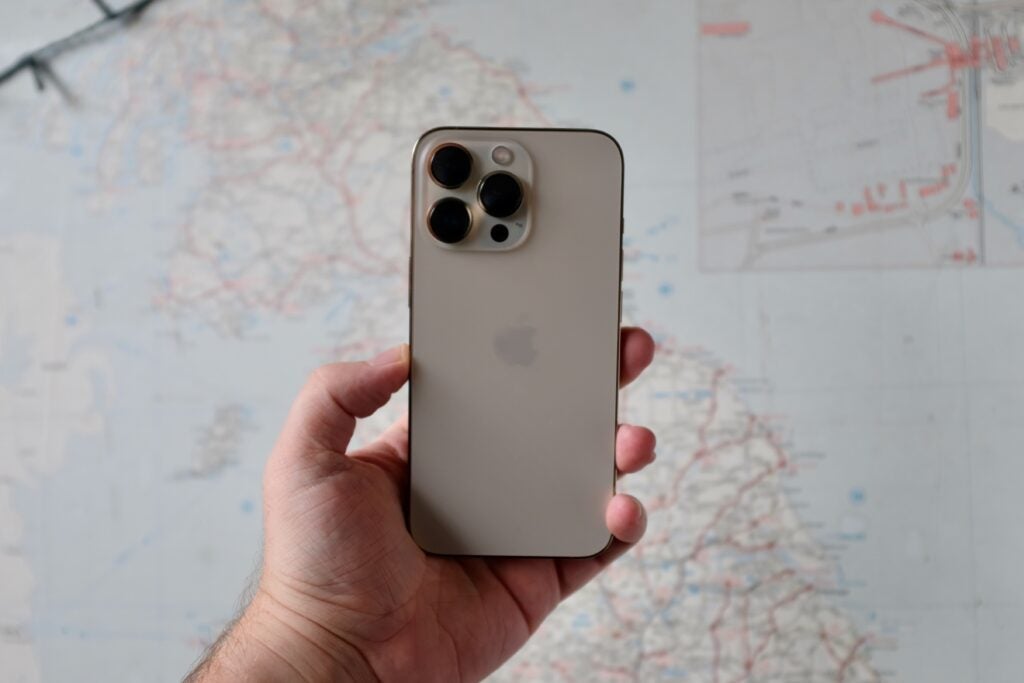
iPhone 13 Pro
The Pro and the Pro Max are some of the best camera phones out right now
Pros
- Great to finally see a 120Hz display on an iPhone
- Good battery life
- Seriously impressive camera system
Cons
- Other phones have better zoom
- The notch feels dated
The iPhone 13 Pro and the iPhone 13 Pro Max are the best camera phones available in 2021. The two phones offer very similar specs, with the Pro Max being slightly smaller and coming in at a lower price than the Max.
The Pro and the Pro Max both pack triple cameras, including one 12-megapixel (f/1.5) wide lens, one 12-megapixel (f/1.8) ultra-wide lens and one 12-megapixel (f/2.8) telephoto lens with 6x optical zoom and 15x digital zoom.
There's a 12-megapixel (f/2.2) TrueDepth camera on the front for selfies, while the rear camera is capable of capture HDR video at up to 4K/60fps with Dolby Vision and up to 4K/30fps in Apple ProRes. There's also support for Apple's new Cinematic mode.
The 13 Pro features a 6.1-inch OLED display with a smaller notch than previous iPhones, along with a faster 120Hz refresh rate. The 13 Pro Max has the same specs but larger at 6.7-inches.
Both phones are powered by Apple's own A15 Bionic chipset with a five-core GPU (an extra core compared with the standard iPhone 13) and a massive 1TB of storage on board. Both phones also have long-lasting batteries, even compared to other flagships available right now.
Reviewer: Max Parker
Full review: iPhone 13 Pro review
Reviewer: Max Parker
Full review: iPhone 13 Pro Max review
![]()
Pixel 6 Pro
The camera is the highlight of the new Pixel range
Pros
- Wonderfully clean, future proof Android 12 software
- Great translation and photo editing services
- All round brilliant rear camera
Cons
- Mediocre battery life
Google's Pixel phones are known for their advanced cameras and the Pixel 6 Pro is no exception.
Google's 2021 flagship showcases its three rear cameras with a new wide camera module. The array consists of a 50-megapixel (f/1.85) main lens, a 12-megapixel (f/2.2) ultra-wide lens and a 48-megapixel (f/3.5) telephoto lens.
There's an 11.1-megapixel (f/2.2) selfie camera on the front and support for 4K video at up to 30fps on the front camera and up to 60fps with the rear lenses.
The camera takes advantage of all of the usual Pixel camera features, along with some new features powered by the first Google Tensor chipset, including Face Unblur, Motion Mode, Magic Eraser and Real Tone.
Camera aside, the Pixel 6 Pro features an all-new three-tone design and a spacious 6.7-inch screen with a 120Hz refresh rate.
The main disadvantage to the Pixel 6 Pro is the battery life as this drains quickly when faced with more intensive tasks like gaming and recording videos.
Reviewer: Alastair Stevenson
Full review: Google Pixel 6 Pro Review
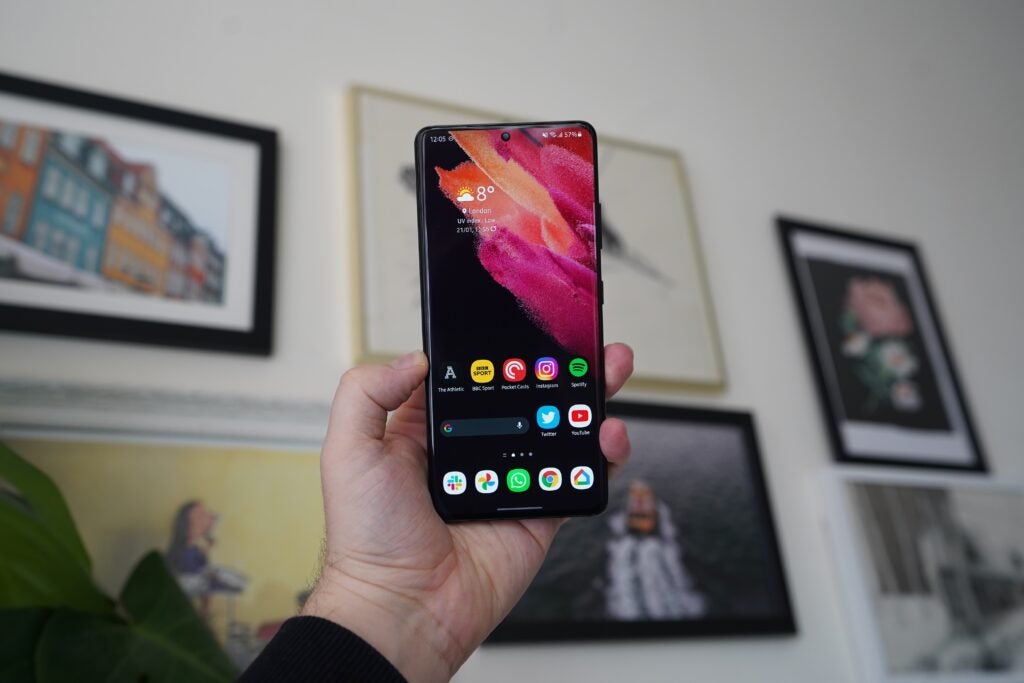
Samsung Galaxy S21 Ultra
Best camera phone for versatility
Pros
- Great screen thanks to WQHD+ and 120Hz
- Much-improved design with an attractive finish
- Far more versatile camera than the iPhone 12 Pro Max
Cons
- Expensive, with many cheaper phones offering the same features
- Big and heavy
- No charger included
The Samsung Galaxy S21 Ultra is one of our favourite smartphones on the market for a variety of reasons, one of those being the incredibly versatile camera.
The quad setup includes a 108MP (f/1.8) wide angle sensor, a 12MP (f/2.2) ultra-wide angle sensor, a 10MP (f/2.4) 3x zoom sensor and a 10MP (f/4.9) 10x zoom sensor. The phone also packs a 40MP selfie camera on the front and can capture video footage in up to 8K at 24fps.
The main lens produces 12MP images by default, but you can easily switch to 108MP if you're happy to sacrifice some storage. The 108MP sensor produces detailed, natural-looking images with a soft bokeh effect that blurs the background to highlight the subject.
While the camera still has that colourful, Insta-friendly, Samsung quality, the colours have been toned down a bit compared with previous generations. There's even an option on the front camera to shoot a more natural image.
Other key features on this S21 Ultra include the fast Exynos 2100 processor, stunning WQHD+/120Hz display and plenty of storage and RAM. If you're happy to drop over £1000 on your next phone, this is a fantastic pick.
Reviewer: Max Parker
Full review: Samsung Galaxy S21 Ultra review
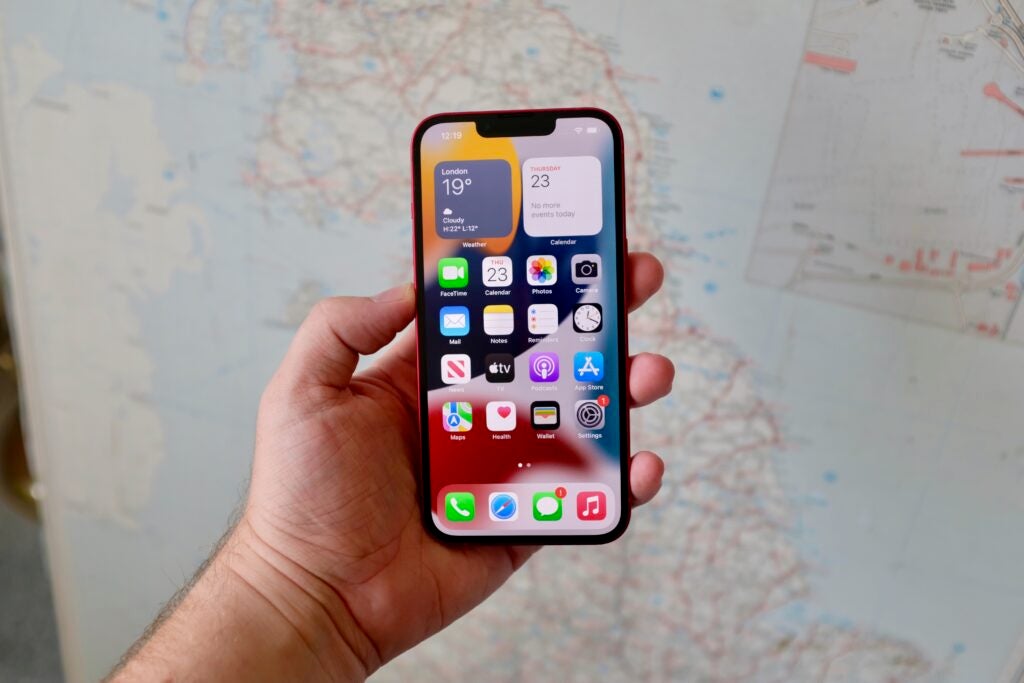
iPhone 13
Another great camera from Apple
Pros
- Much improved battery life
- Bright, vivid OLED display
- Excellent main camera
Cons
- No ProMotion
- No optical zoom
The iPhone 13 offers similar camera capabilities to the iPhone 13 Pro with one less lens and a significantly lower price.
Here, the camera consists of two 12-megapixel sensors – a wide angle lens with an f/1.6 aperture and an ultra-wide angle lens with an f/2.4 aperture. That means there's no telephoto lens as there is on the 13 Pro and Pro Max, so don't expect the camera to be capable of zooming in as close to your subject
Otherwise, the phone features the same 12-megapixel (f/2.2) TrueDepth camera on the front and the same HDR 4K/60fps video recording with Dolby Vision with the rear camera. One difference in video recording is there's no ProRes support on the regular iPhone 13. There is, however, support for Apple's new Cinematic mode.
The iPhone 13 packs the same 6.1-inch OLED display and 20% smaller notch as the iPhone 13 Pro, but lacks the speedy 120Hz refresh rate found on the pricier phone.
The phone is also powered by the same A15 Bionic chip, but with four GPU cores rather than five and up to 512GB of storage instead of 1TB. The phone takes advantage of similar battery improvements to the 13 Pro and Pro Max.
Reviewer: Max Parker
Full review: iPhone 13 review
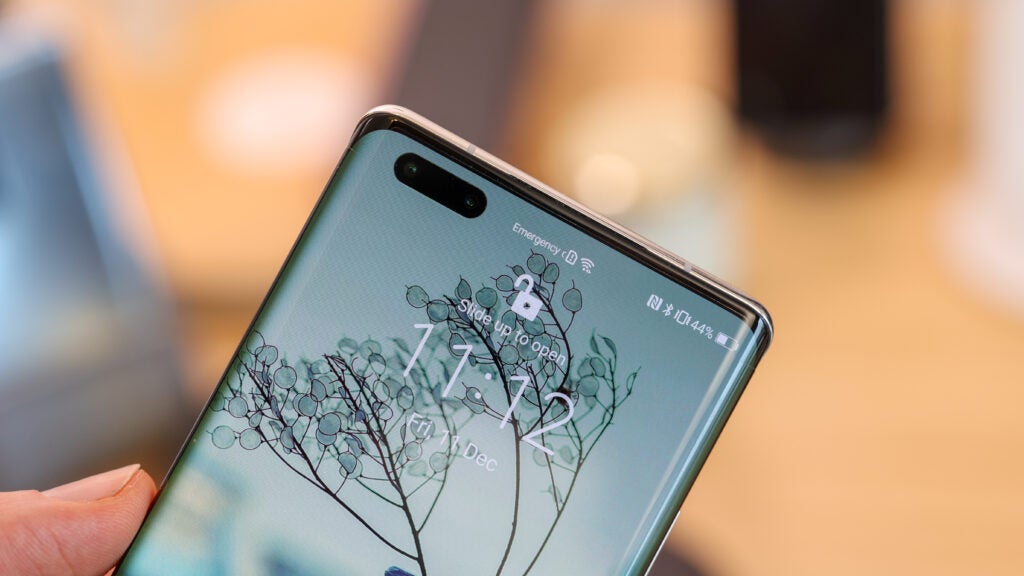
Huawei Mate 40 Pro
Huawei does it again
Pros
- Great screen
- Excellent camera system
- Loud, expansive speakers
Cons
- No Google services
- Can get warm when gaming
- Ultra-wide camera could be wider
- Not available easily in the USA
Huawei has been producing some of the best camera phones for years now, so it shouldn't come as much of a surprise to see the Huawei Mate 40 Pro sitting high up on this list.
On the back of the Mate 40 Pro you've got a number of cameras. At the helm is a 50-megapixel f/1.9 camera. The sensor identical to the one included with the excellent Huawei P40 Pro Plus. Alongside it sits a P40 Pro-a-like 12-megapixel f/3.4 5x zoom periscope camera, and a 20-megapixel f/1.8 ultra-wide.
Snaps shot on the Mate 40 Pro definitely exhibit similar characteristics to the typical Leica look (you'll see the brand's logo on the camera module). In our review, we said images are "warm, rich and zingy, without looking mottled and over-processed like some photos taken on Samsung phones". Dynamic range is strong even in backlit scenes, and challenging subjects such as black cats and glass surfaces look textured and realistic. The low-light performance continues this theme too, with very good results during testing.
Battery life is great and it charges up very quickly thanks to a 66w charger. You've got a great 6.76-inch 90Hz display too and the very capable Kirin 9000 chipset. Of course, the biggest issue here is the lack of Google services. There's no Google Play store on the Mate 40 Pro so that means no access to common apps like Google Pay, YouTube and Gmail. The lack of support for the underlying Google services also means some other apps won't work too, like Uber. Which is why we only recommend it to buyers that place camera performance as their top priority when picking a phone.
Reviewer: Basil Kronfli
Full review: Huawei Mate 40 Pro review
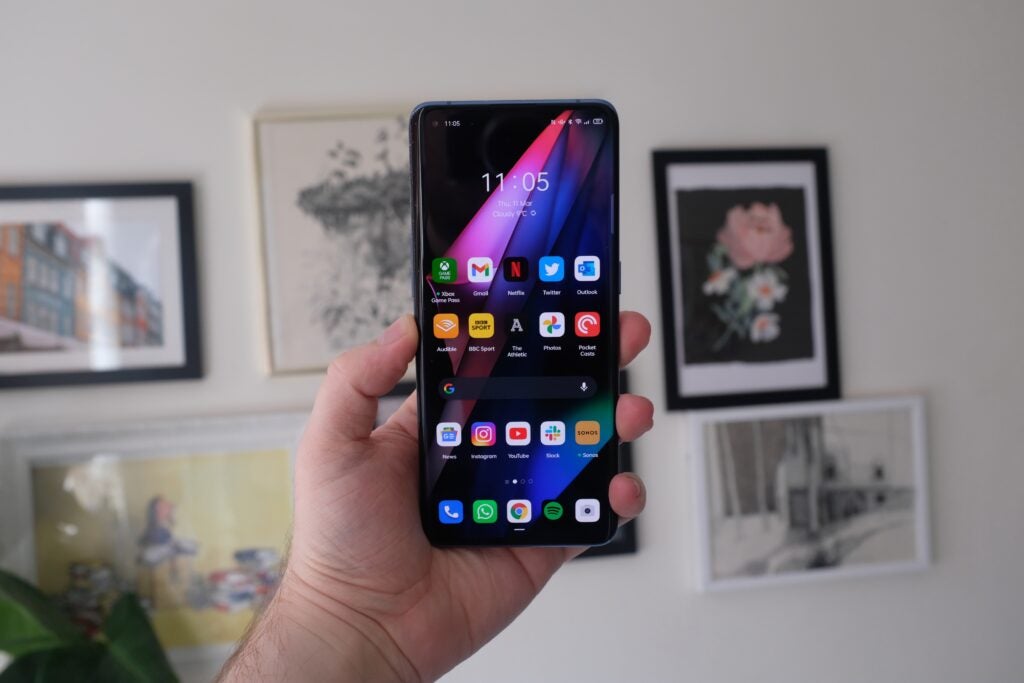
Oppo Find X3 Pro
Another reliable camera system from Oppo
Pros
- Thin and light for a 6.7-inch phone
- Adaptive 120Hz display is gorgeous and highly customisable
- Oppo's software has seen huge improvements
Cons
- Battery life not as good as the Galaxy S21 Ultra
- Loses the periscope zoom skills of the Find X2 Pro
- Vibration motor is terrible
We were very impressed with the camera on the Oppo Find X2 Pro and it's no surprise the follow-up is another excellent camera phone. The Oppo Find X3 Pro boasts an atypical 50MP wide camera with a 50MP ultra wide. Both use the new Sony IMX 766 sensor for optimal quality across the board.
The duo of 'main' sensors are both great. During testing they consistently captured reliable pictures in all conditions. Images are beautifully vibrant and colourful, with distortion on the ultra wide kept very much to a minimum. There are certainly some similarities in the colour tuning to the Samsung Galaxy S21 Ultra with an emphasis on punchy greens and reds.
The main sensors are more than capable of shooting in lower-light situations too, with a multi-exposure night mode for when light is really at a minimum. Pictures we took in near darkness came out bright and with plenty of detail.
Along with these two great cameras, you've also got a decent 13MP telephoto camera for zoomed shots and a 3MP microscope lens for 60x magnification. The latter is little more than a gimmick, but a clever and fun one, while the zoom is a bit of a disappointment when compared to the outgoing X2 Pro. Oddly, the older phone proved capable of better results while zooming during testing.
Oppo used a periscope lens last time around to offer far superior zoom and that's been ditched here, likely to keep the phone slimmer.
The rest of the phone impresses, just like the camera. There's a lovely 6.7-inch 1440p OLED display with HDR support and high levels of brightness. Inside you've got a Snapdragon 888 chipset with 5G, 12GB RAM and 256GB storage. Keeping the phone going in a 4500mAh battery that charges up via 65w charging.
Reviewer: Max Parker
Full review: Oppo Find X3 Pro review
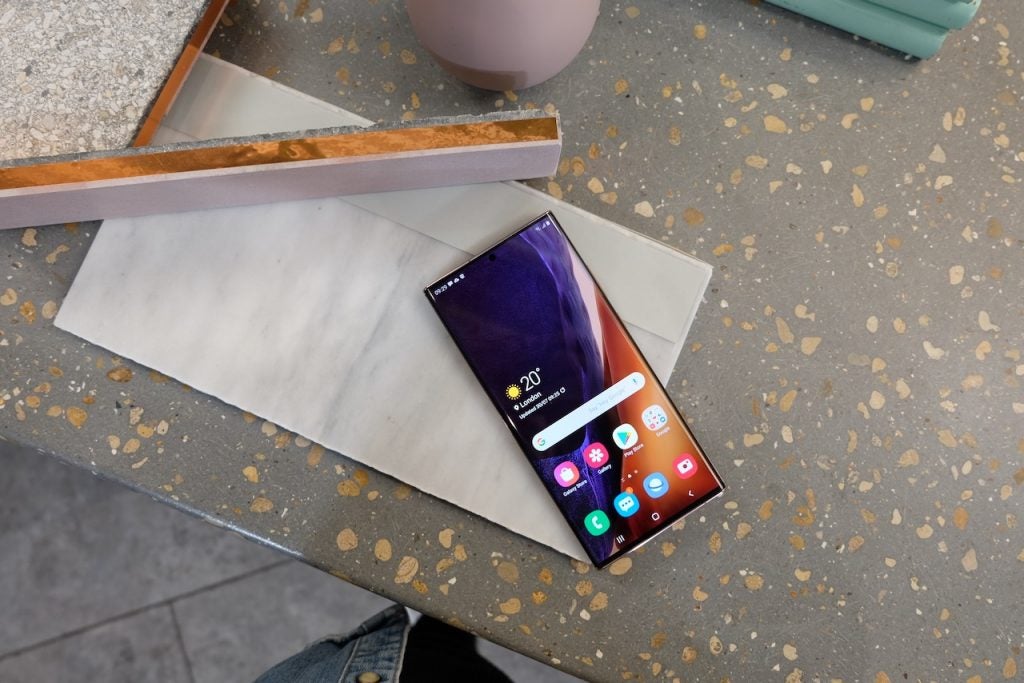
Samsung Galaxy Note 20 Ultra
Best camera phone for fans of big phones
Pros
- Bronze colour is really nice, and adds a matte finish
- S Pen even more responsive than ever
- Really good triple camera
Cons
- Battery life, on Exynos version, isn't good
- Screen resolution limits are annoying
Samsung's second phone to sport the "Ultra" moniker matches its predecessor in both its lavishness and price tag. However, what it does bring to the table is a more refined take on the camera setup, including ditching the 100x Space Zoom that was panned on the S20 Ultra.
The Galaxy Note 20 Ultra brings a camera setup that features a 108-megapixel main sensor, a 12-megapixel telephoto and 12-megapixel ultra-wide. The combo produces strong results that in our review we described as "a huge improvement over the S20 Ultra." The setup tones down Space Zoom to just 50x, while using a 5x optical zoom alongside it. Still, the zoom skills here are far superior to that of the iPhone 12 series and Pixel 5, only losing out to the Huawei P40 Pro.
Aside from the camera, the Galaxy Note 20 Ultra comes sporting many more tricks – from a gorgeous and gargantuan 120Hz Adaptive Refresh Rate 6.9-inch OLED display to strong performance from the Exynos 990 (even if we here in the UK lose out on the better Snapdragon 865+ option).
As we mentioned in the intro to this guide, Samsung has now launched its Galaxy S21 and S21 Ultra. Like the Galaxy Note 20 Ultra, the S21 Ultra packs a 108-megapixel main sensor and a 12-megapixel ultra-wide lens. The S21 Ultra also includes two telephoto lenses for 100x Space Zoom. The S21 camera is better, but the Note remains good.
Reviewer: Max Parker
Full review: Samsung Galaxy Note 20 Ultra review
![]()
Google Pixel 4a
Best camera phone on a budget
Pros
- Great camera
- Refreshingly small size for an Android phone
- The promise of fast updates
- Nice, sharp OLED screen
- Affordable
Cons
- You'll find competition with far larger spec sheets and feature lists
- Some mild performance and touch latency hiccups
- As well as being a Pro, the small screen might put some off
One of the stand-out features of the Pixel 3a was its camera, and Google made sure to bring its expertise to the next version. The Pixel 4a packs in a single 12-megapixel f/1.7 sensor that dominates many camera phones sporting more than double the amount of camera on the back.
Image processing power and low-light shooting make the Pixel 4a a contender in the camera department with even the most premium phones, while managing to come in at a sub-£400 price point.
Of course, the biggest issue for some will be the lack of any secondary sensors. This is the only phone on this list to eschew an ultra-wide or telephoto camera completely.
Along with the stellar camera you also get the sleek Pixel Launcher, for a clean-yet-functional Android experience, as well as speedy updates guaranteed for three years.
Despite the super-low price, Google has managed to whack a pleasing screen onto the Pixel 4a. The OLED display offers sharp images, even without a 90Hz refresh rate. The 5.8-inch OLED sits nicely in a basic but still decent-quality plastic body, which comes in a size that harks back to a more one-handed friendly past.
You might be wondering why we haven't included the Pixel 5a in this list. While the phone does exist, it's only available in the US meaning you'll have more luck finding the still fantastic 4a here in the UK.
Reviewer: Max Parker
Full review: Google Pixel 4a review
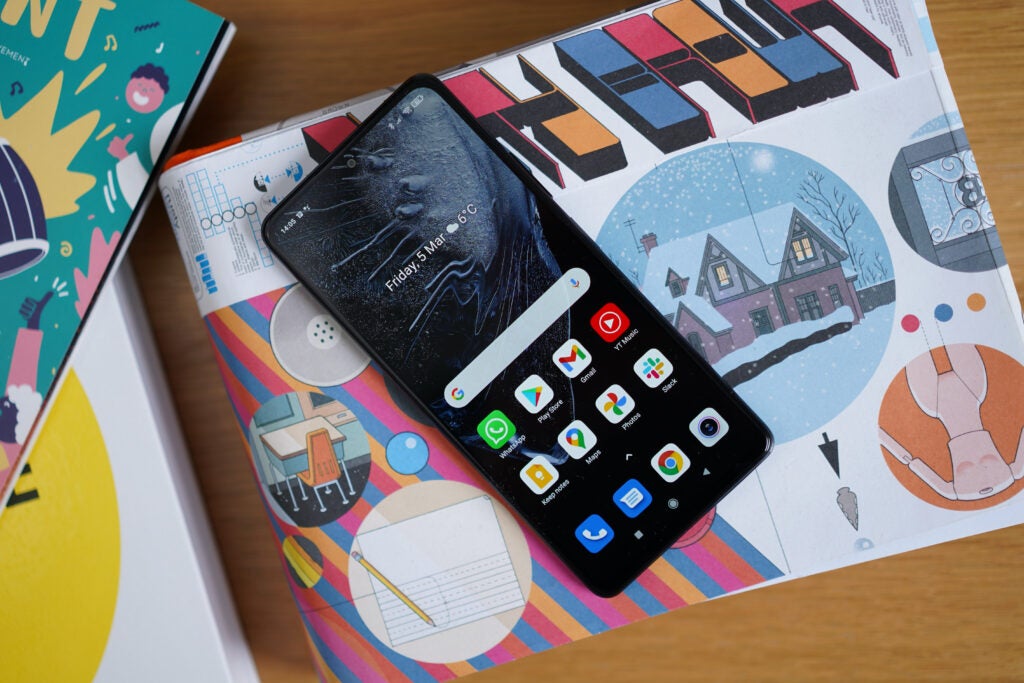
Xiaomi Redmi Note 10 Pro
A great display, a good camera, and dependable battery life
Pros
- Best in class 120Hz AMOLED display
- 108MP camera capable of fine things
- Excellent stamina from 5020mAh
- Bargain price tag
Cons
- No 5G
- Camera disappoints in less-than-ideal lighting
Aside from the excellent Google's Pixel 4a, we rarely encounter cheaper phones with actually great cameras. This is where a hefty amount of a flagship phone's development budget will tend to go, after all. The Xiaomi Redmi Note 10 Pro is a worthy rival to the Pixel 4a though.
The 108MP camera on the back of this phone is quite possibly the best you'll find for less than £300. This huge sensor uses 9-in-1 pixel binning to create 12MP images and as such the sensor is capable of taking very bright and detailed snaps. In good lighting you'll get balanced shots with nice colours and good dynamic range.
The night mode is good too, though the lack of OIS means it's not quite comparable to the best phones out there. Where the phone suffers most is the in-between lighting situations, where you're past perfect daylight conditions yet Night Mode isn't appropriate.
Other good features include a 120Hz display, 5020 mAh battery and a Snapdragon 732G chipset.
Reviewer: Jon Mundy
Full Review: Xiaomi Redmi Note 10 Pro review

Sony Xperia 1 III
One of the most interesting smartphone cameras around
Pros
- Best in class 120Hz AMOLED display
- 108MP camera capable of fine things
- Excellent stamina from 5020mAh
- Bargain price tag
Cons
- No 5G
- Camera disappoints in less-than-ideal lighting
Sony's set of three rear cameras on its Xperia 1 III work in a very different way to most other phones on this list.
Whereas the iPhone 12, Galaxy S21 series and the Pixel 5 put a lot of focus on computational algorithms to get the most from the sensors, the Xperia gives you more control.
During testing we found the Pro apps for both photo and video let you tweak all the settings you could want and the fairly flat pictures are great as a base to edit from. Though they do lack some pop if you want to fling them straight onto social media.
The zoom camera is pretty clever, as it can between two focal lengths. The results here are fine in daylight, but not so much when it gets dark.
The rest of the phone retains a very flagship feel – and considering the price that's really important. There's a Snapdragon 888 inside, 12GB RAM, 4500mAh battery and a 4K 120Hz display.
Reviewer:Max Parker
Full review:Sony Xperia 1 III
We also considered…
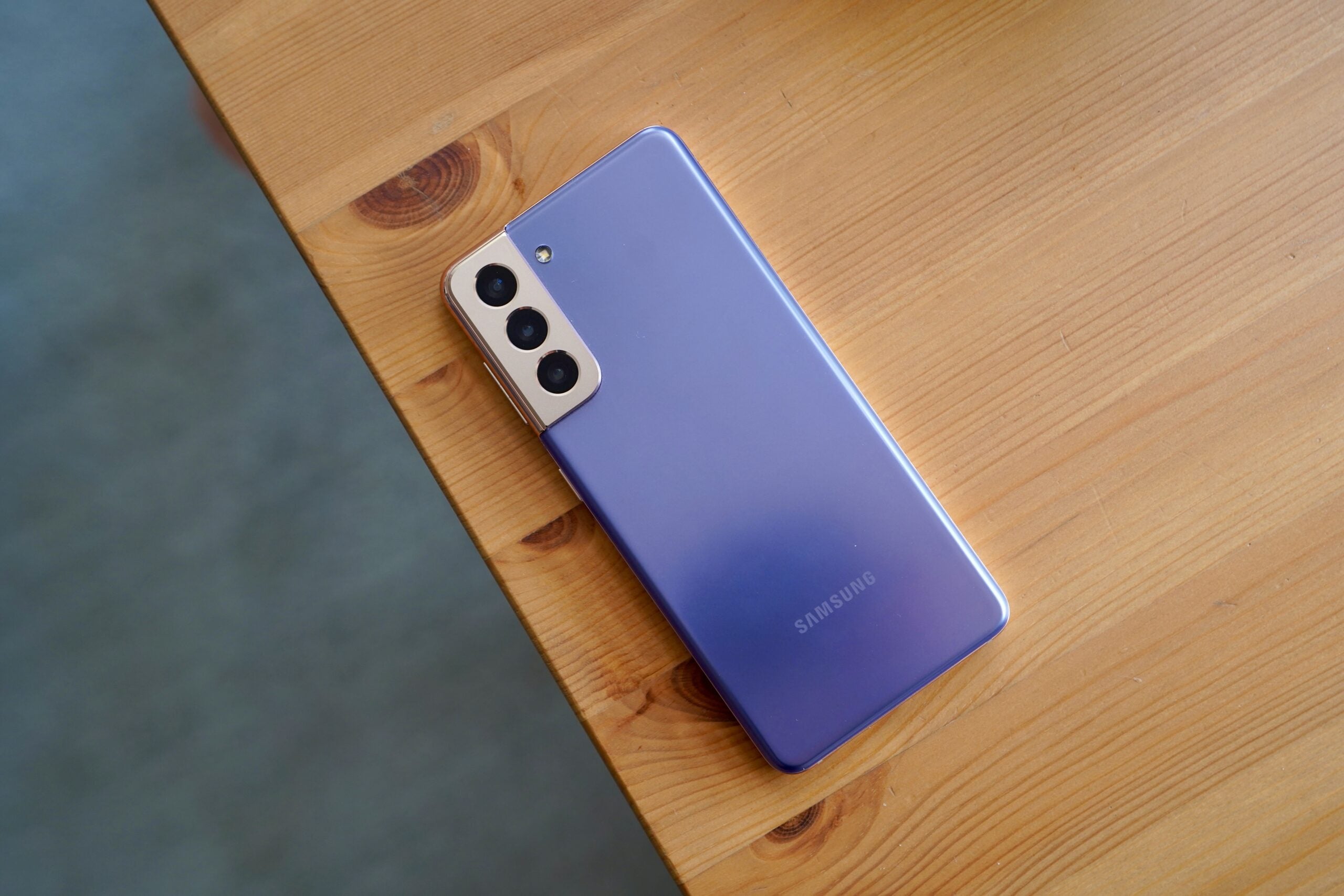
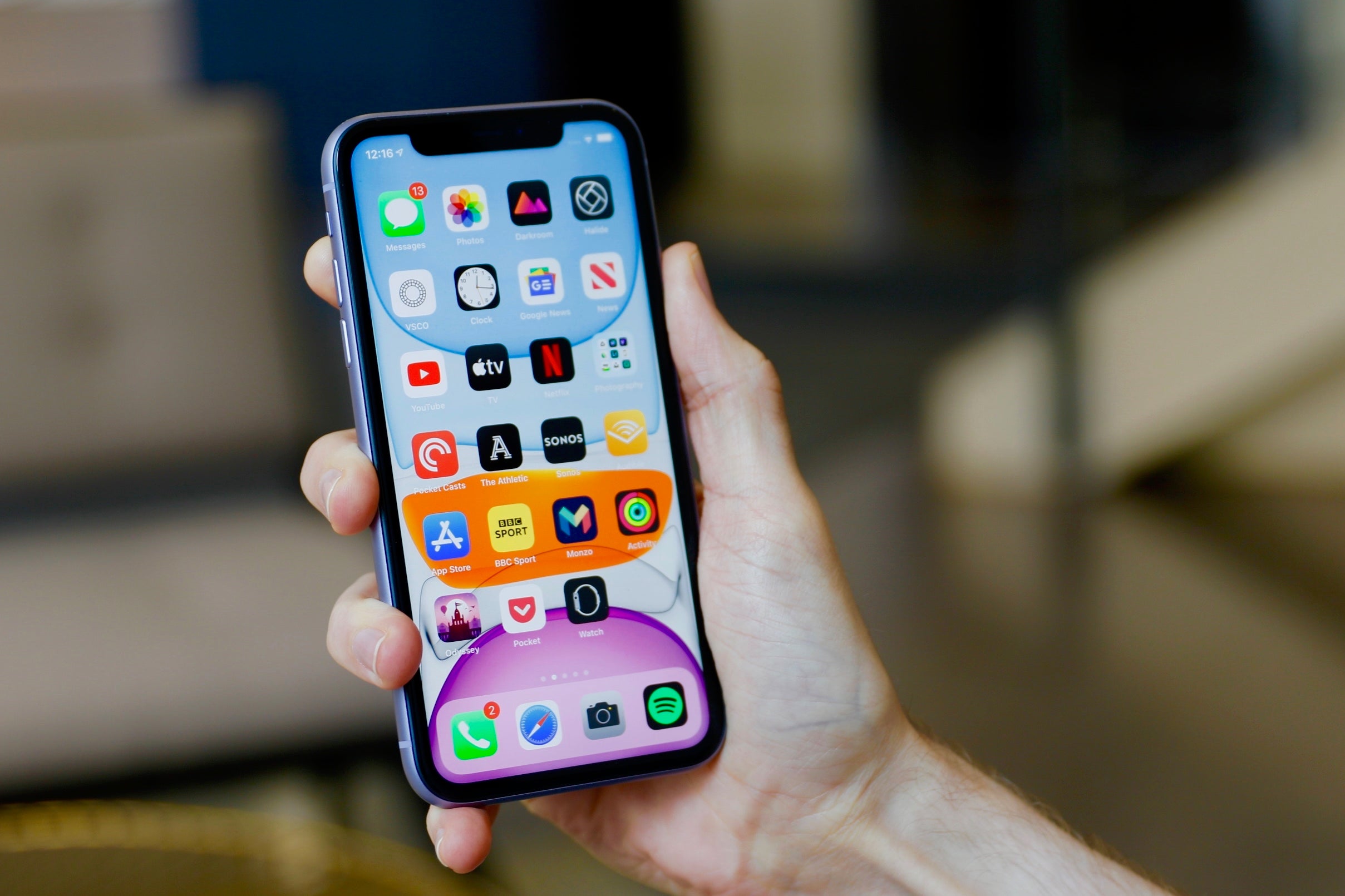
iPhone 11
The natural successor to the ridiculously popular iPhone XR
FAQs
What is an optical zoom?
Optical zoom is a camera phone feature that allows you to take images of your subject from afar without allowing the quality to suffer as you might see with digital zoom.
What is a telephoto camera?
Having a telephoto lens on your phone lets you to get very close to your subject without reducing the quality of your image.
What is OIS?
OIS – or optical image stablisation – uses a gyroscope to compensate for shake, keeping your videos stable and your images crisp even in low light.
You might like…
Specs Comparison
‹
UK RRP
USA RRP
EU RRP
CA RRP
AUD RRP
Manufacturer
Screen Size
Storage Capacity
Rear Camera
Front Camera
Video Recording
IP rating
Battery
Wirless charging
Fast Charging
Size (Dimensions)
Weight
ASIN
Operating System
Release Date
First Reviewed Date
Model Number
Resolution
HDR
Refresh Rate
Ports
Chipset
RAM
Colours
Bin capacity
Google Pixel 4a
£349
$349
€499
CA$479
AU$599
5.81 Inches
128GB
12.2MP
8MP
Yes
No
3140 mAh
–
Yes
69.4 x 144 x 8.2 MM
143 G
B08F7ZM2G4
Android 11
Aug-20
03/08/2020
G025J
2340 x 1080
Yes
60 Hz
3.5mm headphone jack, USB-C
Snapdragon 730G
6GB
Black, Blue (limited edition)
litres
Huawei Mate 40 Pro
£1099.99
–
€1200
–
AU$1999.99
Huawei
6.76 mm
256GB, 512GB
50MP + 12MP + 20MP
13MP + TOF 3D
Yes
IP68
4400 mAh
–
Yes
75.5 x 162.9 x 9.1 MM
212 G
–
Android 11 (no Google services)
Oct-20
27/01/2021
NOH-NX9
2772 x 1344
Yes
90 Hz
USB-C
Kirin 9000
8GB
Silver, White, Black, Green, Yellow
litres
Oppo Find X3 Pro
£1099
–
€1199
–
–
Oppo
6.7 Inches
256GB
50MP + 13MP + 50MP + 3MP
32MP
Yes
IP68
4500 mAh
Yes
Yes
74 x 163.6 x 8.3 MM
193 G
B08XY4Z6S9
Android 11
Nov-21
03/11/2021
CPH2173
1440 x 3216
Yes
120 Hz
USB-C
Qualcomm Snapdragon 888
12GB, 8GB
Black, Blue, White
litres
Samsung Galaxy Note 20 Ultra
£1179
$1299
€1329
CA$2029
AU$1999
Samsung
6.9 inches
512GB
108MP + 12MP + 12MP
10MP
Yes
IP68
4500 mAh
Yes
Yes
77.2 x 8.1 x 164.8 MM
208 G
B08C5DBSB7
Android 10
21082020
–
SM-N986BZKGEUA
3088 x 1440
Yes
120 Hz
USB 3.2 Type-C
Exynos 990 or Snapdragon 865+
12GB
Mystic Bronze, Mystic White, Mystic Black
–
Samsung Galaxy S21 Ultra
£1149
$1199
€1399
CA$1649
AU$1849
Samsung
6.8 mm
128GB, 512GB, 1TB
108MP + 10MP + 10MP + 12MP
40MP
Yes
IP68
5000 mAh
Yes
Yes
8.9 x 75.6 x 165.1 MM
227 G
B08T1TDFVX
Android
14012021
21/01/2021
SM-G998B
3220 x 1440
Yes
120 Hz
USB-C
Snapdragon 888 or Exynos 2100
12GB, 16GB
Black, Navy, Brown, Silver
–
Xiaomi Redmi Note 10 Pro
–
$279
–
–
–
Xiaomi
6.67 mm
–
108MP + 8MP + 5MP + 2MP
16MP
Yes
IP53
5020 mAh
–
Yes
76.5 x 164 x 8.1 MM
193 G
B07ZGJRLG8
Android 11
Apr-21
15/03/2021
M2101K6G
1080 x 2400
Yes
120 Hz
Headphone jack
Snapdragon 732G
8GB
Grey, Blue, Bronze
litres
iPhone 13
£779
$799
€809
CA$949
AU$1199
Apple
6.1 inches
128GB, 256GB, 512GB
12MP + 12MP
12MP
Yes
IP68
–
Yes
Yes
71.5 x 7.65 x 146.7 MM
173 G
–
iOS 15
2021
30/09/2021
–
2532 x 1170
Yes
60 Hz
Lightning
A15 Bionic
–
Black, Red, Pink, Blu, Starlight
–
iPhone 13 Pro
£949
$999
€1189
CA$1399
AU$1699
Apple
6.1 mm
128GB, 256GB, 512GB, 1TB
12MP + 12MP + 12MP
12MP
Yes
IP68
–
Yes
Yes
71.5 x 7.65 x 146.7 MM
203 G
–
iOS 15
2021
–
–
2532 x 1170
Yes
120 Hz
Lightning
A15 Bionic
6GB
Blue, Black, Silver, Gold
–
iPhone 13 Pro Max
£1049
$1099
€1259
CA$1549
AU$1849
Apple
6.7 inches
128GB, 256GB, 512GB, 1TB
12MP + 12MP + 12MP
12MP
Yes
IP68
–
Yes
Yes
78.1 x 7.65 x 160.8 MM
238 G
–
iOS 15
2021
–
–
2778 x 1284
Yes
120 Hz
Lightning
A15 Bionic
6GB
Black, Gold, Blue, Silver
–
Sony Xperia 1 III
£1199
$1299
€1299
Unavailable
Unavailable
Sony
6.5 inches
256GB, 512GB
12MP + 12MP + 12MP (dual tele)
8MP
Yes
IP68
4500 mAh
Yes
Yes
71 x 8.2 x 165 MM
186 G
–
Android 11
2021
20/07/2021
–
3840 x 1644
Yes
120 Hz
3.5mm, USB-C
Qualcomm Snapdragon 888
12GB
Black, Purple, Grey
–
Pixel 6 Pro
£849
$849
–
–
–
6.7 inches
128GB, 256GB
50MP + 12MP + 48MP
50MP
Yes
IP68
5003 mAh
Yes
Yes
3 x 0.4 x 6.5 INCHES
210 G
–
Android
2021
–
–
1440 x 3120
Yes
120 Hz
USB Type-C
Google Tensor
12GB
Stormy Black, Cloudy White, Sorta Sunny
–
›
Trusted Reviews test data
‹
Geekbench 5 single core
Geekbench 5 multi core
sRGB
Adobe RGB
DCI-P3
Max brightness
1 hour video playback (Netflix, HDR)
30 minute gaming (intensive)
30 minute gaming (light)
1 hour music straming (online)
1 hour music streaming (offline)
Time from 0-100% charge
Time from 0-50% charge
3D Mark – Wild Life
3D Mark – Sling Shot Extreme
Google Pixel 4a
–
–
–
–
–
–
–
–
–
–
–
–
–
–
–
Huawei Mate 40 Pro
–
–
–
–
–
–
–
–
–
–
–
–
–
–
–
Oppo Find X3 Pro
1023
3345
–
–
–
–
7 %
11 %
10 %
2 %
4 %
40 min
15 Min
5676
–
Samsung Galaxy Note 20 Ultra
–
–
–
–
–
–
–
–
–
–
–
–
–
–
–
Samsung Galaxy S21 Ultra
1029
3148
–
–
–
–
7 %
10 %
9 %
3 %
3 %
100 min
30 Min
–
7321
Xiaomi Redmi Note 10 Pro
–
–
–
–
–
–
–
–
–
–
–
–
–
–
–
Sony Xperia 1 III
1121
3621
–
–
–
–
13 %
14 %
9 %
1 %
1 %
90 min
30 Min
5805
–
Pixel 6 Pro
1046
2914
–
–
–
–
7 %
20 %
12 %
5 %
3 %
67 min
35 Min
6615
–
iPhone 13
1734
4388
92.4 %
66.3 %
68.2 %
530 nits
9 %
7 %
6 %
1 %
1 %
–
30 Min
–
–
iPhone 13 Pro
1725
4791
95.1 %
67 %
70 %
540 nits
9 %
7 %
6 %
1 %
1 %
98 min
33 Min
–
–
iPhone 13 Pro Max
1727
4453
99 %
67 %
70 %
545 nits
7 %
6 %
6 %
1 %
1 %
91 min
31 Min
–
–
›
Phone With The Best Camera 2018
Source: https://www.trustedreviews.com/best/best-camera-phones-3520817
Posted by: comesbeamer.blogspot.com

0 Response to "Phone With The Best Camera 2018"
Post a Comment